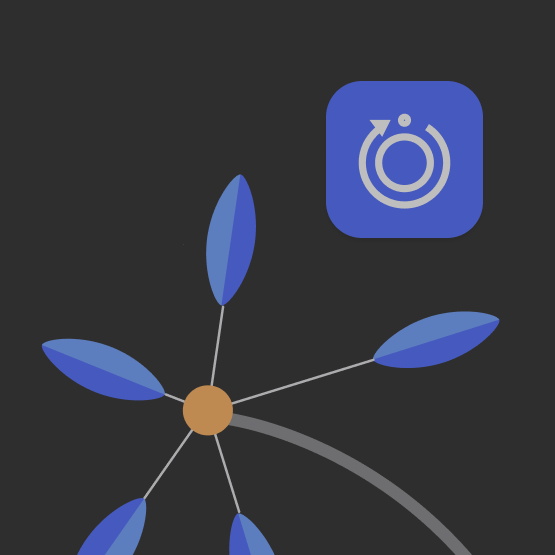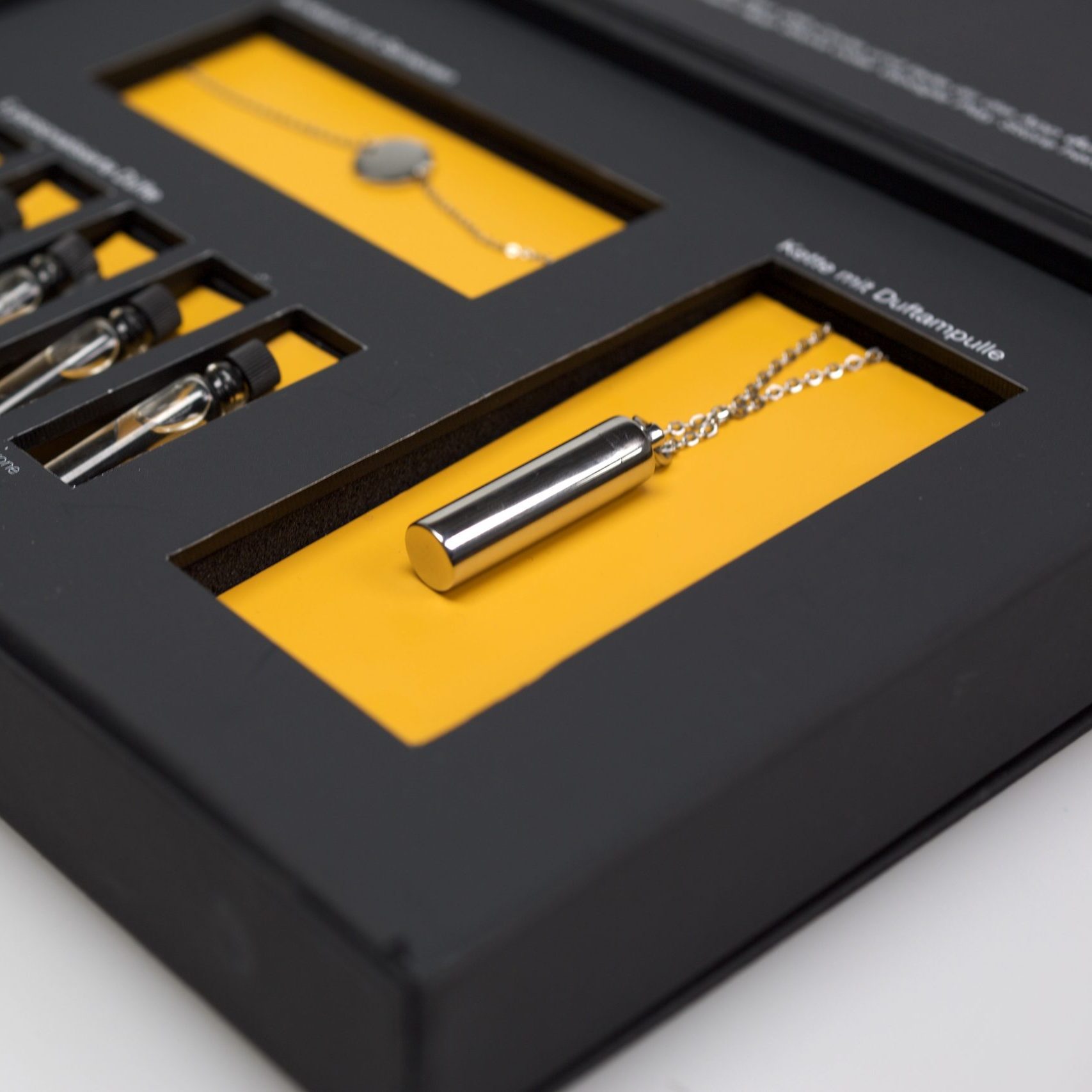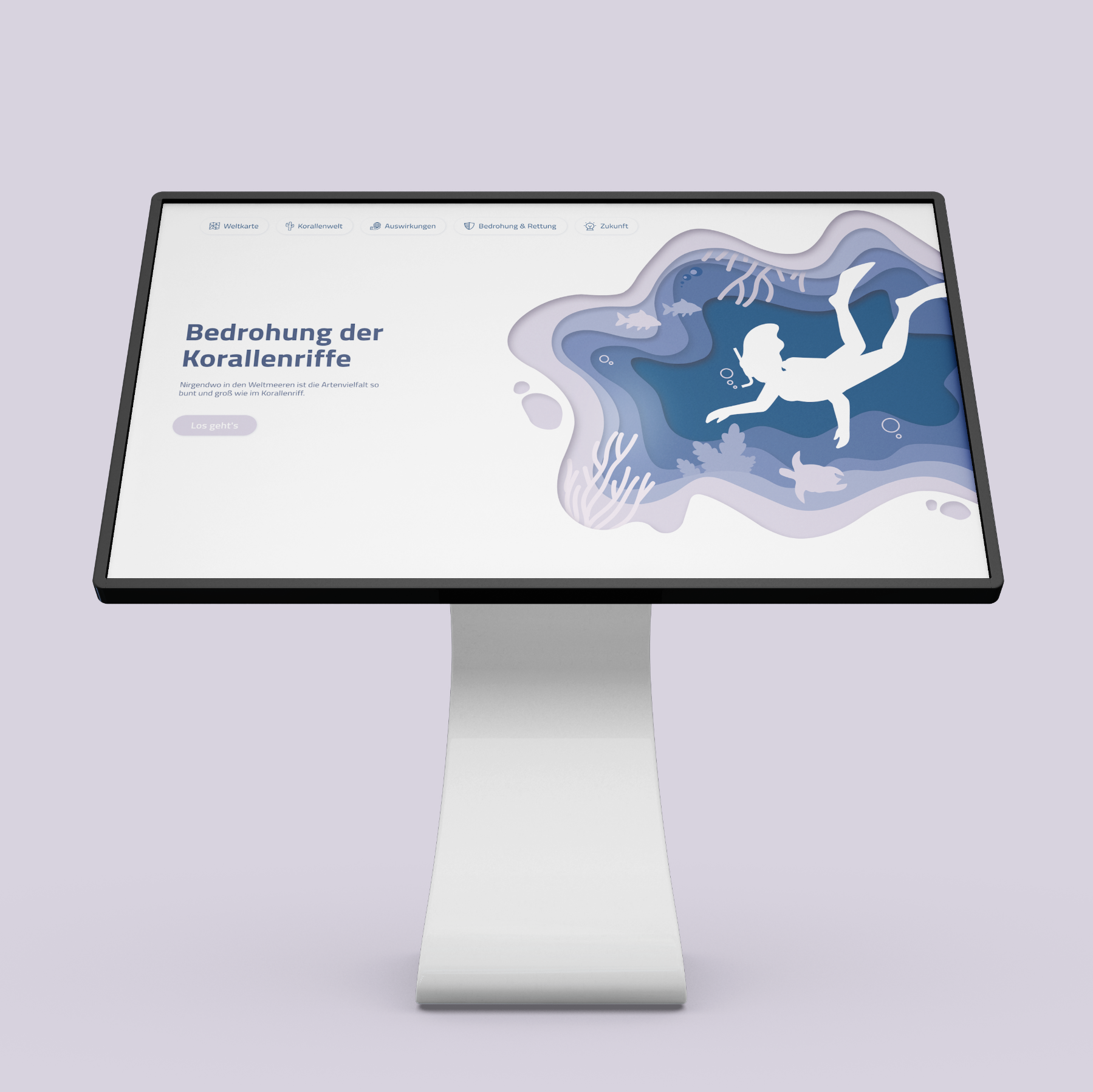dufte
“dufte” aims to support people in selected everyday situations to achieve emotional balance.
PROJECT CONTEXT
Invention Design & nov. – feb 2024/25
TOOLS
Figma, After Effects
SUPERVISION
Prof. David Oswald
MY ROLE
Research, Concept , UI Design, Prototyping
TEAM MEMBERS
Selina Dick, Marina Geltenbort, Elisa Moder, Lena van Maris
DESIGN
PROCESS

OUR
GOAL
The aim is to provide greater emotional balance in stressful situations. For example, a personalized scent can be released to promote relaxation in cases of exam anxiety. After conditioning, the scent helps to maintain calm even in stressful moments—a principle that can be applied in many areas.
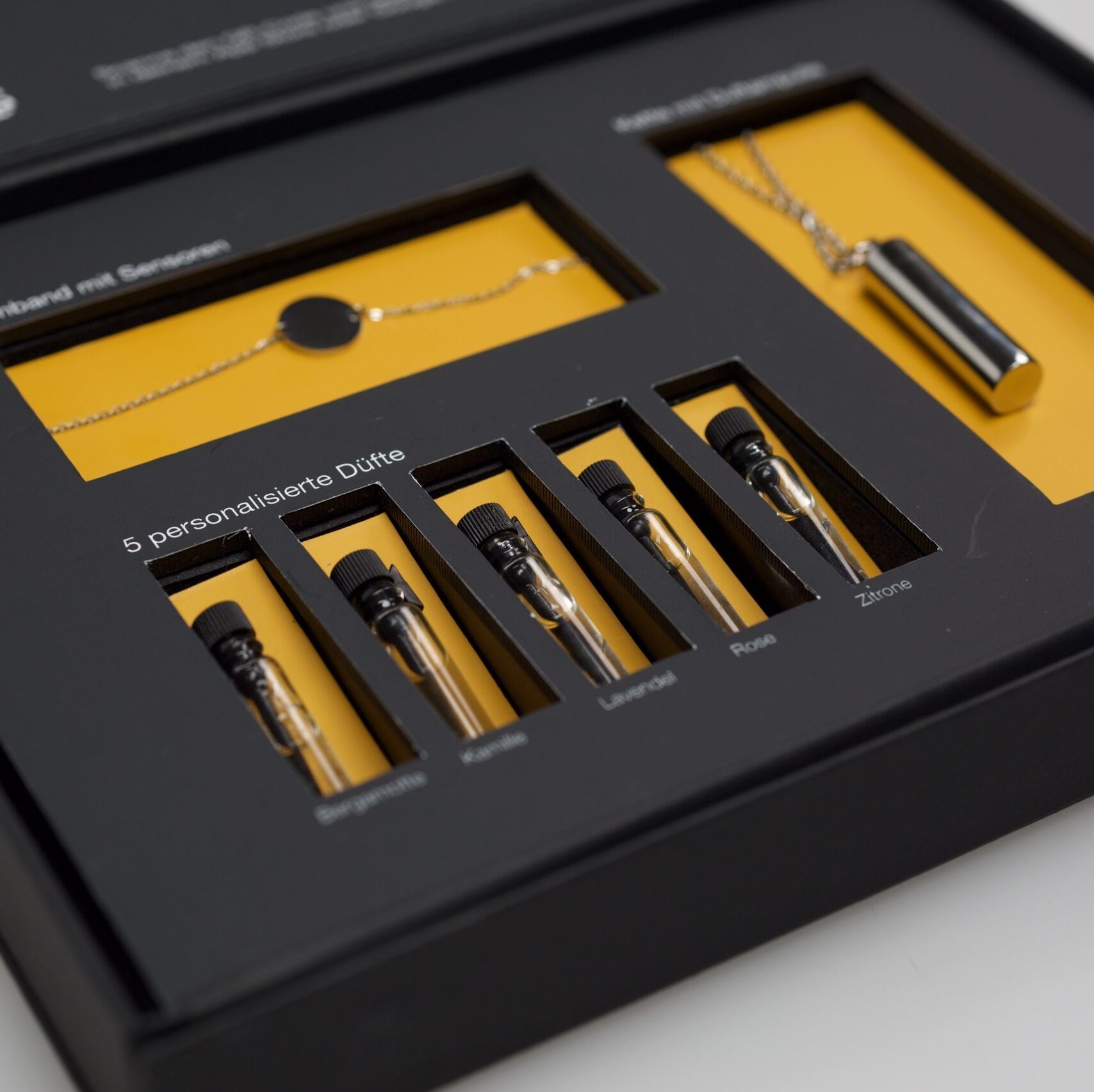
OUR
PAINPOINTS
To gain deeper insights into the relationship between scent and emotional well-being, we conducted interviews with experts across different fields. We conducted interviews with an olfactory researcher Prof. Dr. med Thomas Hummel, an aromatherapist Silke Schmidt and a psychiatrist Dr. Simon Riedesser. These conversations revealed valuable nuances in how scents are perceived and processed, especially in therapeutic contexts.

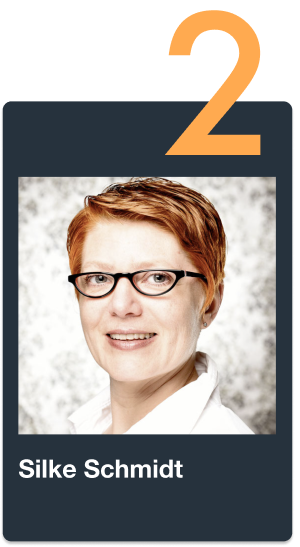

While we learned that scents can influence mood and physical response, the interviews also highlighted critical limitations of aromatherapy — particularly when applied to mental health. Our findings uncovered several recurring challenges, which we synthesized into core pain points to guide the next steps in our design process.
Lack of Scientific Reliability
There is limited scientific research confirming that certain scents have universal effects. Lavender is often labeled as calming, yet individual reactions vary greatly depending on personal associations.
Personal Scent Triggers
Because scent is processed in the brain’s emotional center, each person reacts differently. A fragrance linked to a negative memory can trigger discomfort, even if it’s generally considered pleasant or relaxing.
Inconsistency in Application
The way aromatherapy is applied often depends on individual therapists and subjective choices. This lack of standardization makes it hard to create reliable, scalable scent-based experiences.


BASIS OF OUR
PROJECT
The basis of our project is classical conditioning, which links two stimuli to a response. The most famous example of conditioning is Ivan Petrovich Pavlov’s experiment in which a dog produces saliva by linking food to a bell even when the bell rings.
We chose scents as the neutral stimulus because the sense of smell has the most direct connection to the brain and memories with scents are particularly emotional and vivid. This formed the basis for our Invention Design project “dufte”.
We based our concept on this, but were unable to conduct sufficient user tests within the limited framework of one semester.

neutral stimulus

unconditional stimulus

unconditional reaction
OUR
CONCEPT
The basis of our project is classical conditioning, which combines two stimuli with one response. We chose scents as the neutral stimulus because the sense of smell has the most direct connection to the brain and memories with scents are particularly emotional and vivid. This formed the basis for our Invention Design project “dufte“.
The measured values collected via our deployed technology are evaluated by an artificial intelligence in order to capture the current emotions of our user. The goal here is to help achieve more emotional balance in certain situations that the person finds disturbing. For example, this can help people with exam anxiety by releasing a personalized scent that is associated with relaxation. After the conditioning phase, the scent can help induce relaxation in nervous situations such as an exam. This principle could also be applied to many other situations.

conditional stimulus

conditional response
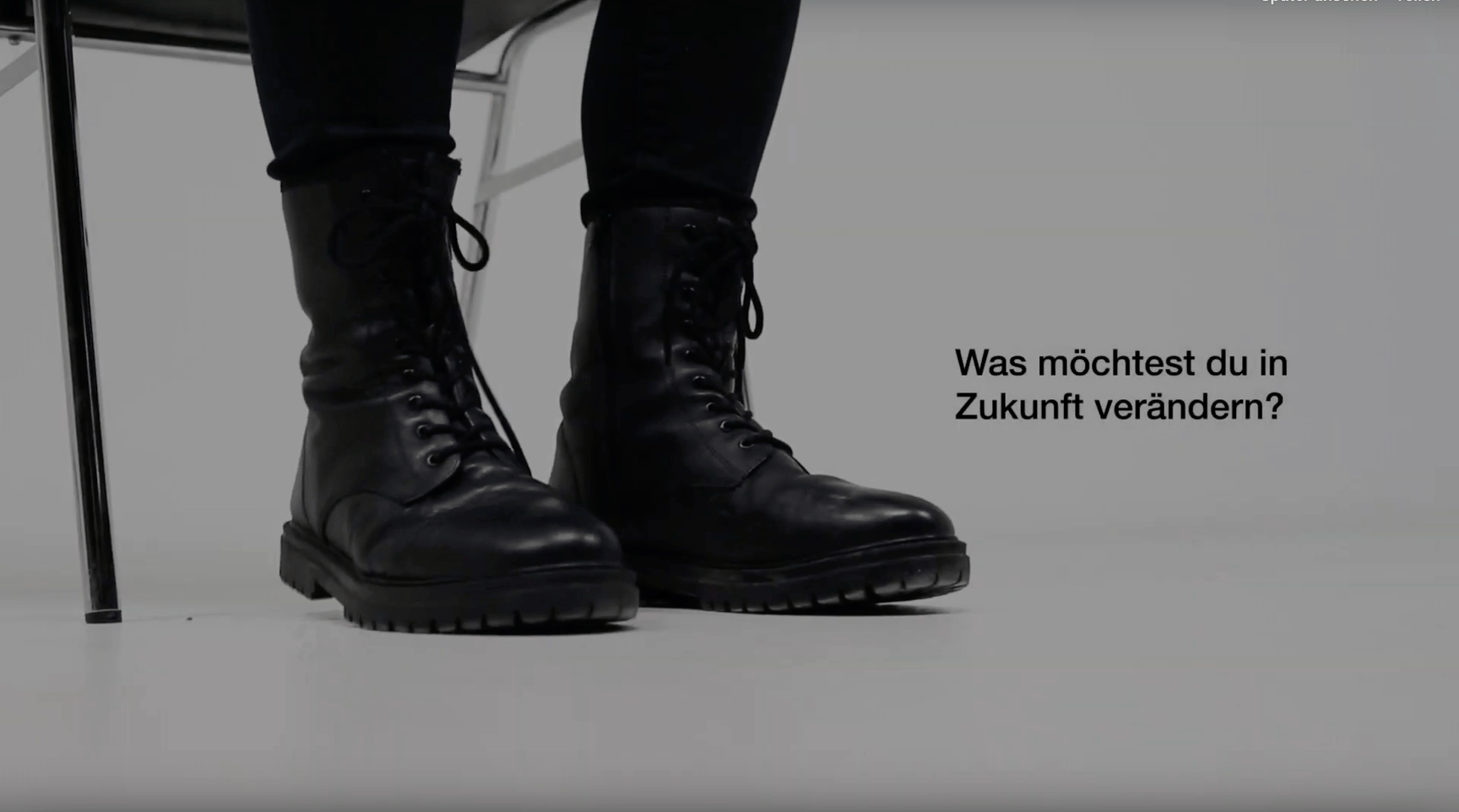
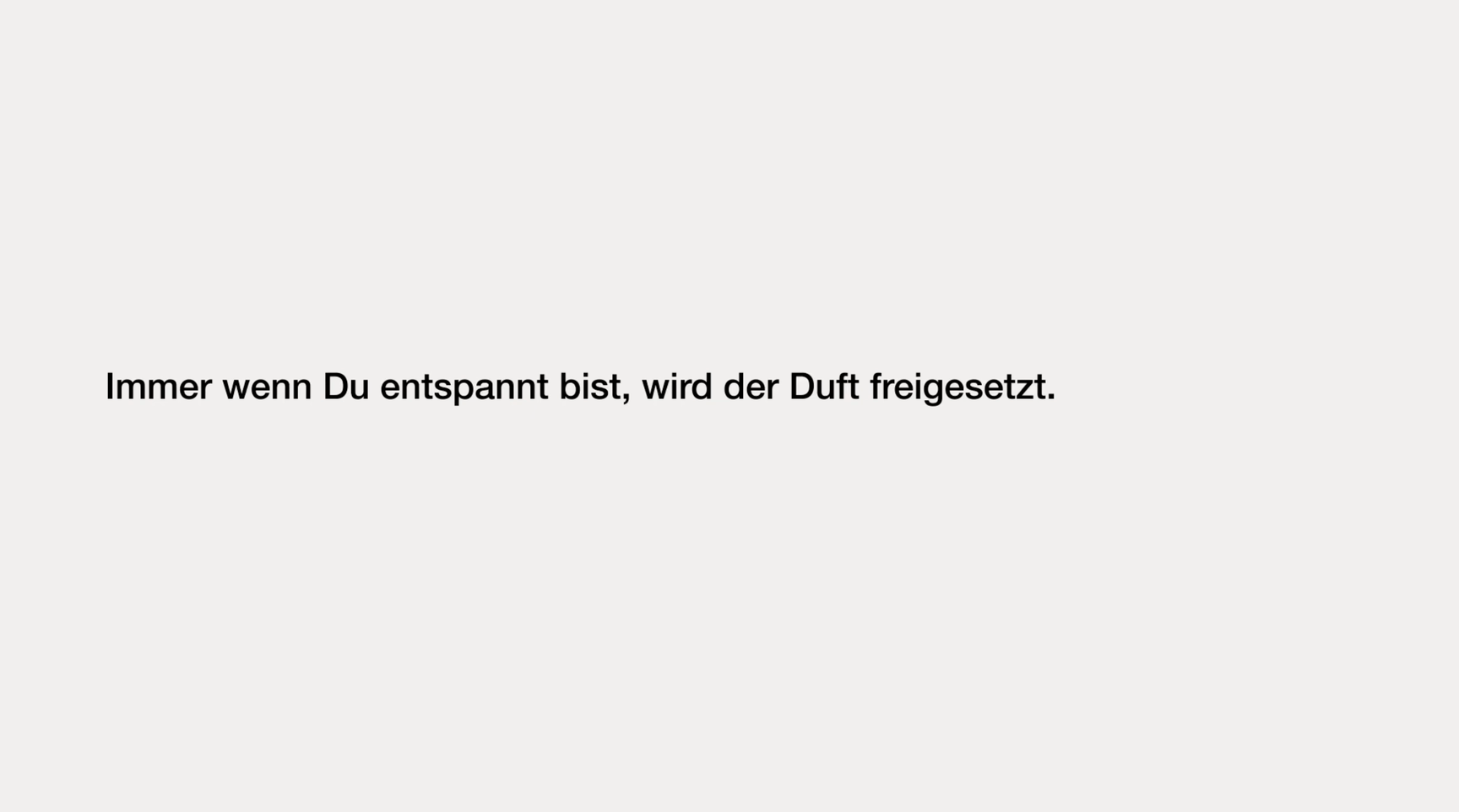
OUR
KIT
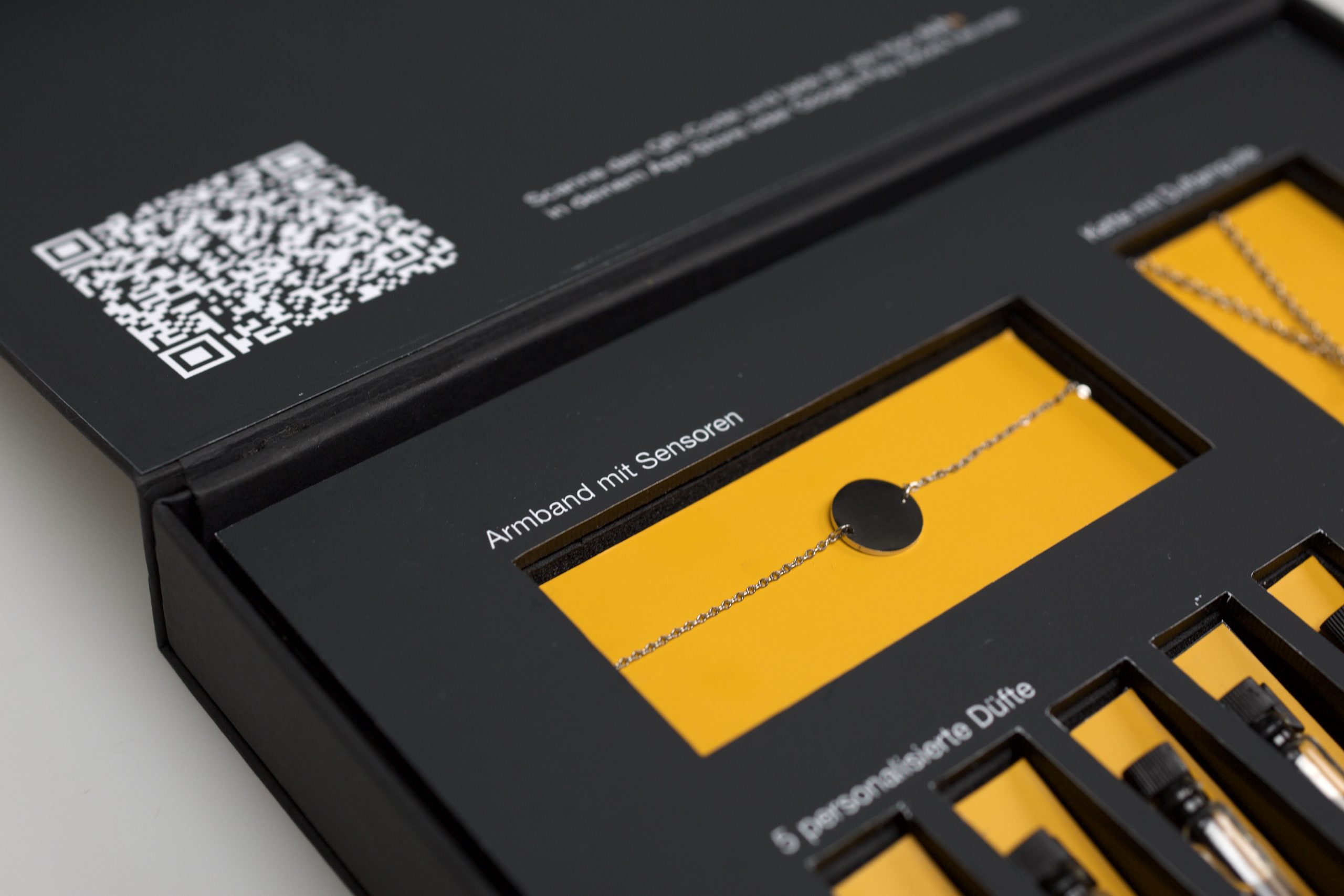
WRISTBAND:
A wristband with sensors measures the electrodermal activity via which the emotional arousal level of a person can be objectively determined.

CHAIN:
A chain with integrated scent diffuser, in which the selected scent ampoule can be placed. This contains a micro to measure the emotional valence, i.e. whether an emotion is perceived as positive or negative, as well as the dominance, via the voice.

FRAGRANCES:
In addition, there are five personalized fragrances, which you can order in advance.
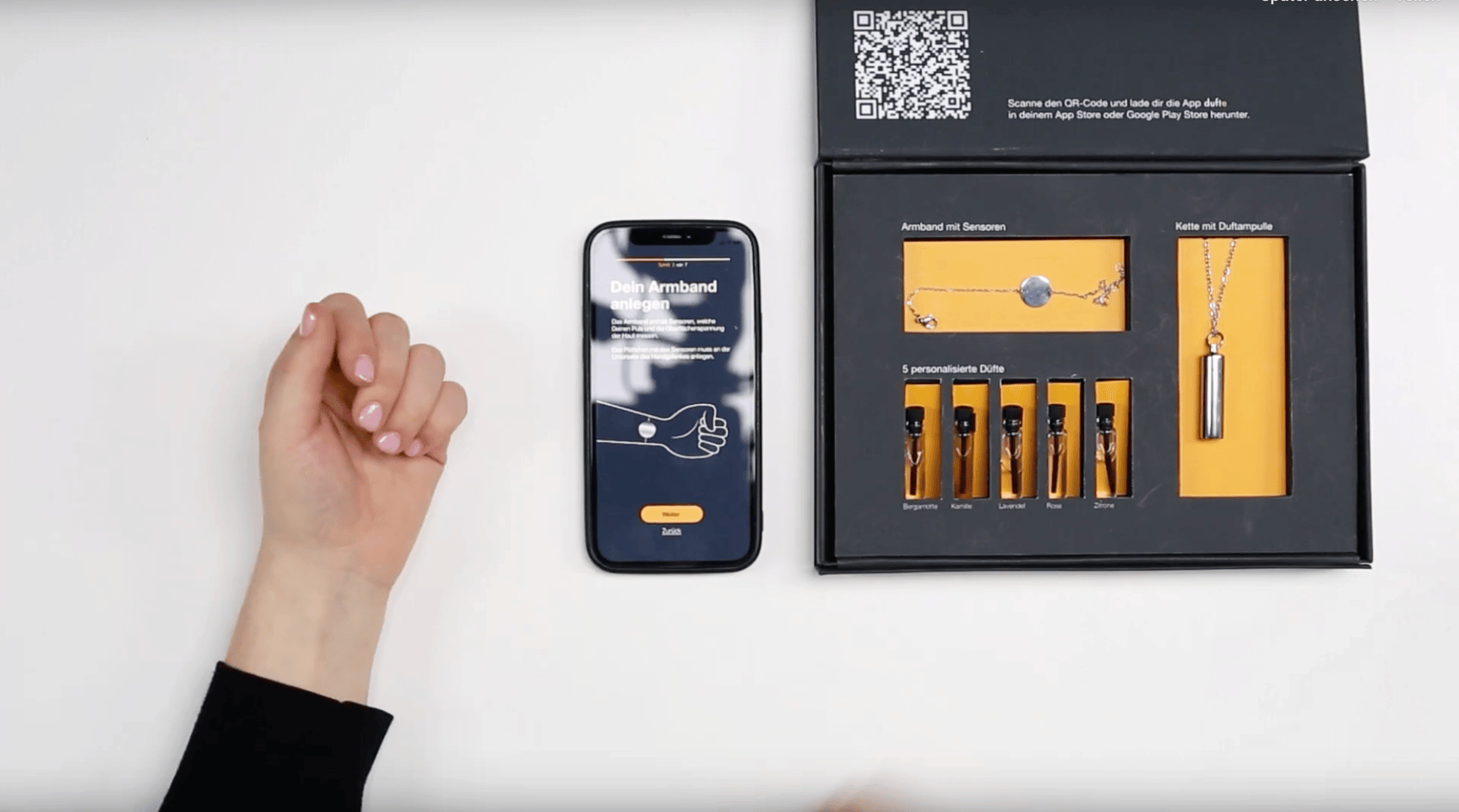
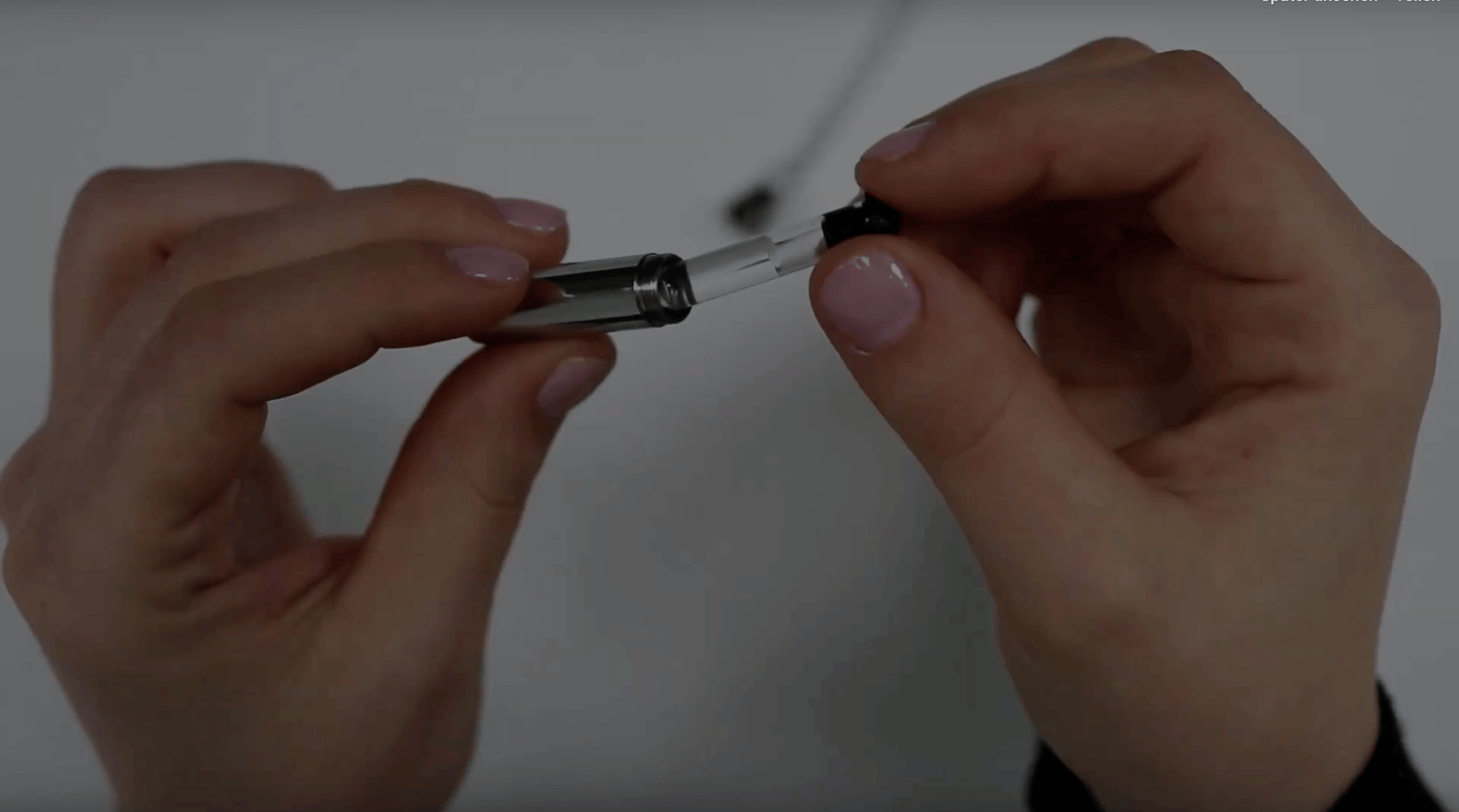
OUR
FEATURES
01
/05
SETTING GOALS
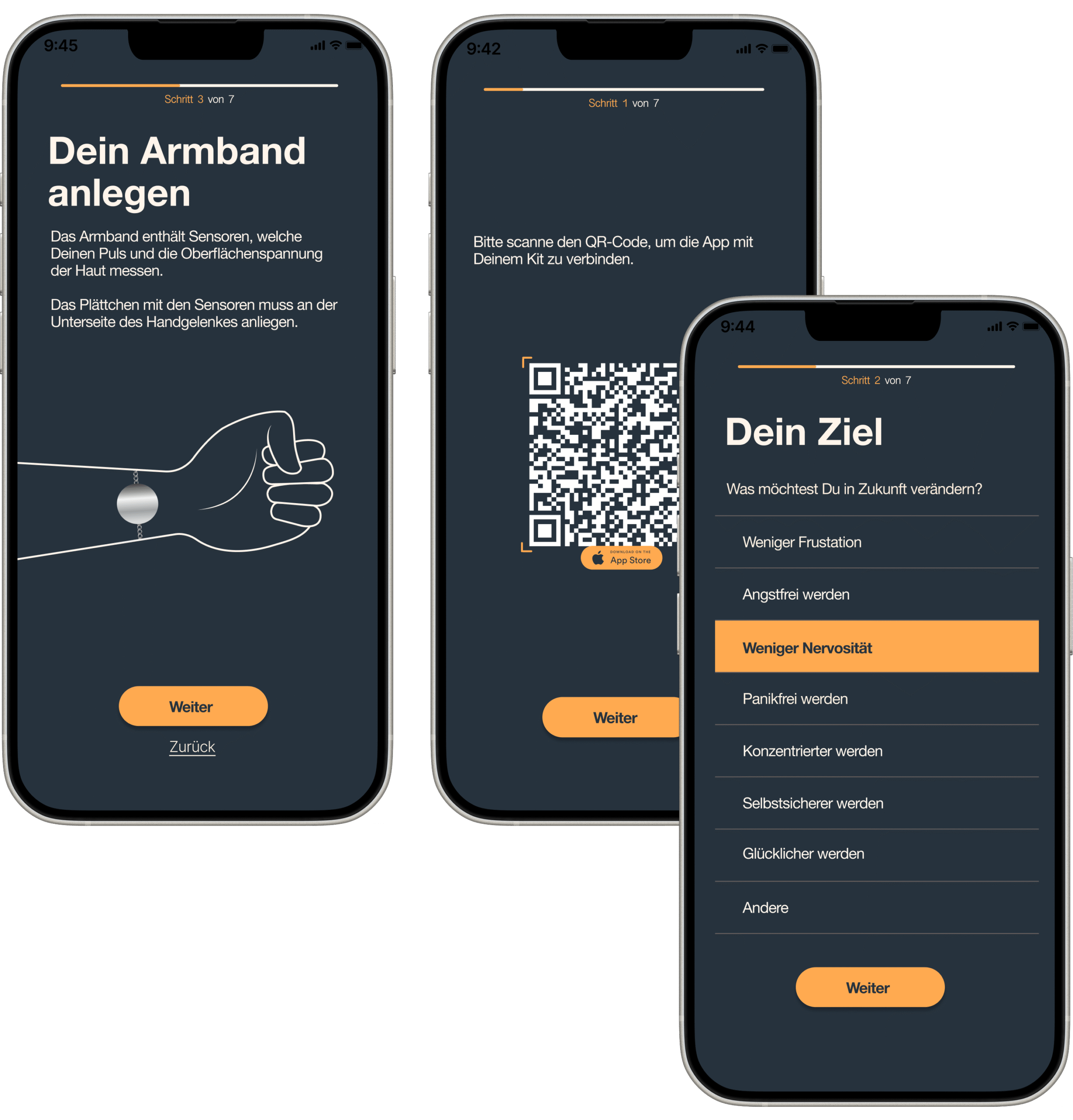
The product is customized to the user during onboarding. Here, the goal that you want to change in the future is set. Among other things, you are shown exactly how to put on the bracelet and chain.
02
/05
YOUR PERFECT FRAGRANCE
In addition, a fragrance test is conducted to find the right fragrance for users, taking into account their own ratings and the AI’s measurements during the test.
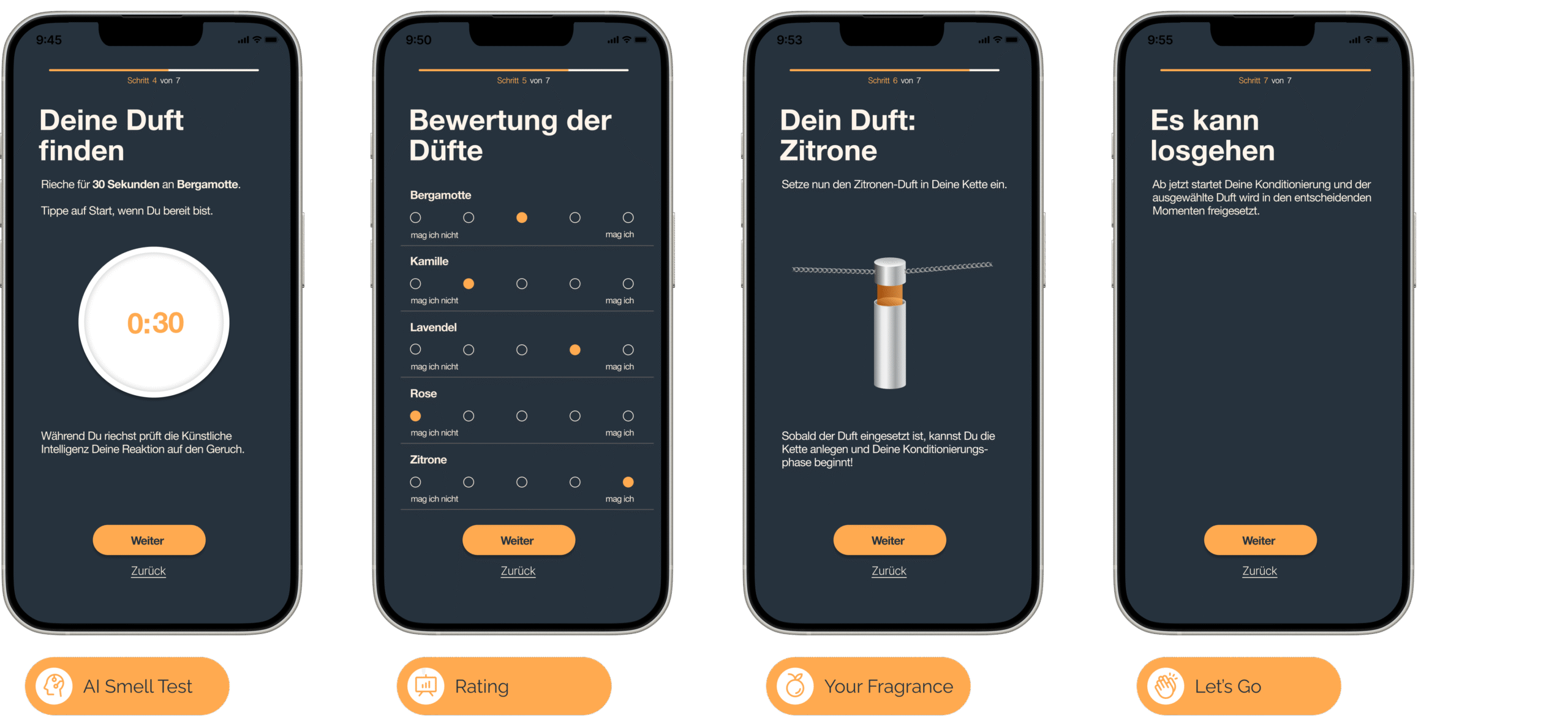
03
/05
MEASUREMENT VALUES GRAPH 1
The graph shows the level of emotions. This graph is always related to the goal you choose at the beginning of the onboarding process. This emotion and the opposite emotion are shown here.
For example, the graph shows exactly when you are relaxed or tense. The orange dot shows the moment when the scent is released. This allows you to understand how you react to the scent and see whether you react at all or whether you need to be conditioned.
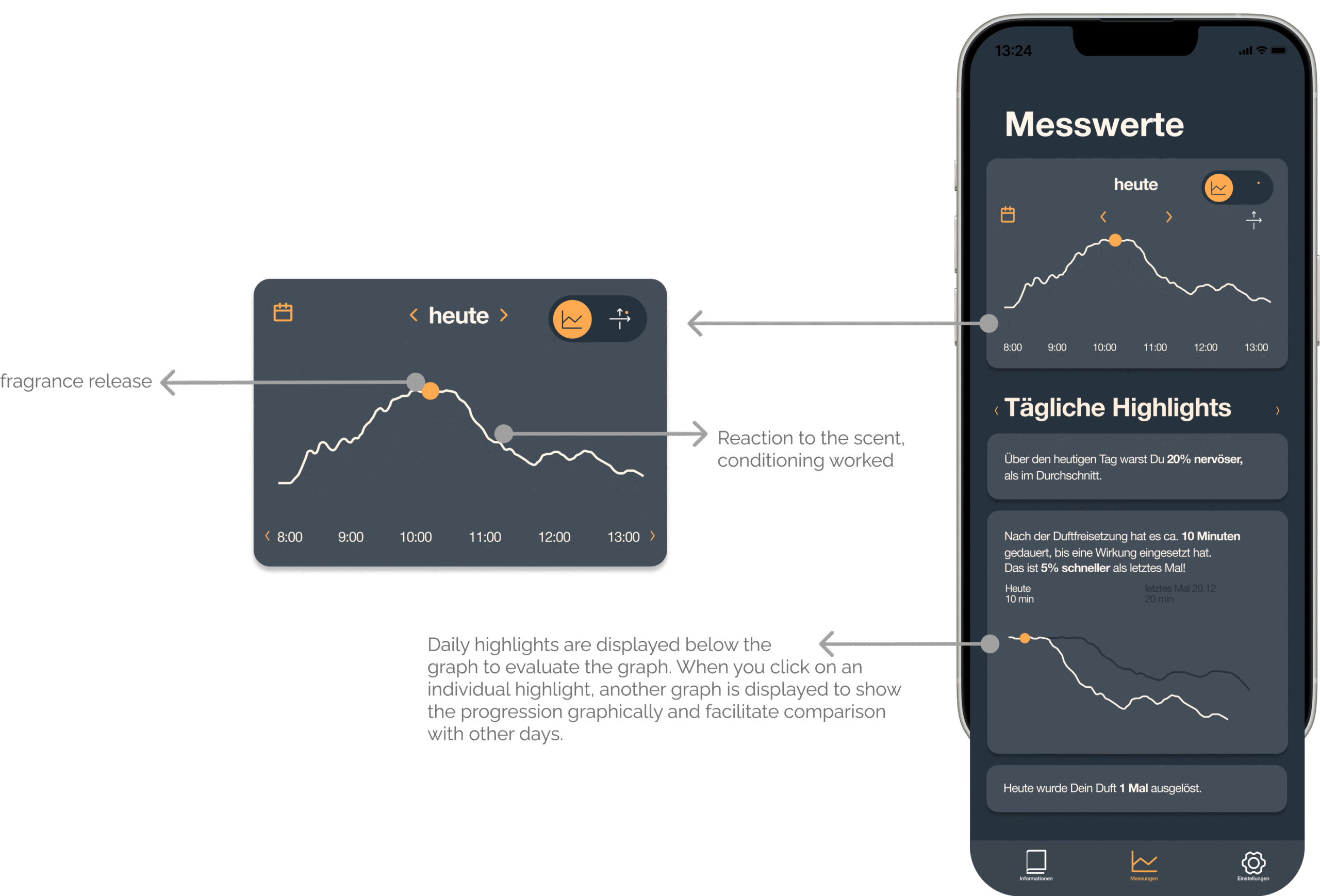
04
/05
MEASUREMENT VALUES GRAPH2
In the second graph, the X-axis shows valence (negative-positive) and the Y-axis shows arousal level (arousal-calm). This graph shows all emotions over the course of the day. Using the slider, you can change the time and see how emotions change throughout the day. Dominance is also shown here by changing the background color of the emotion (here light orange). Light orange means low dominance and dark orange means high dominance.
For example, you may be anxious about a presentation in the morning, nervous 10 minutes before it starts, and then the scent is released and you feel relaxed. This sequence of emotions is visualized in this graph.
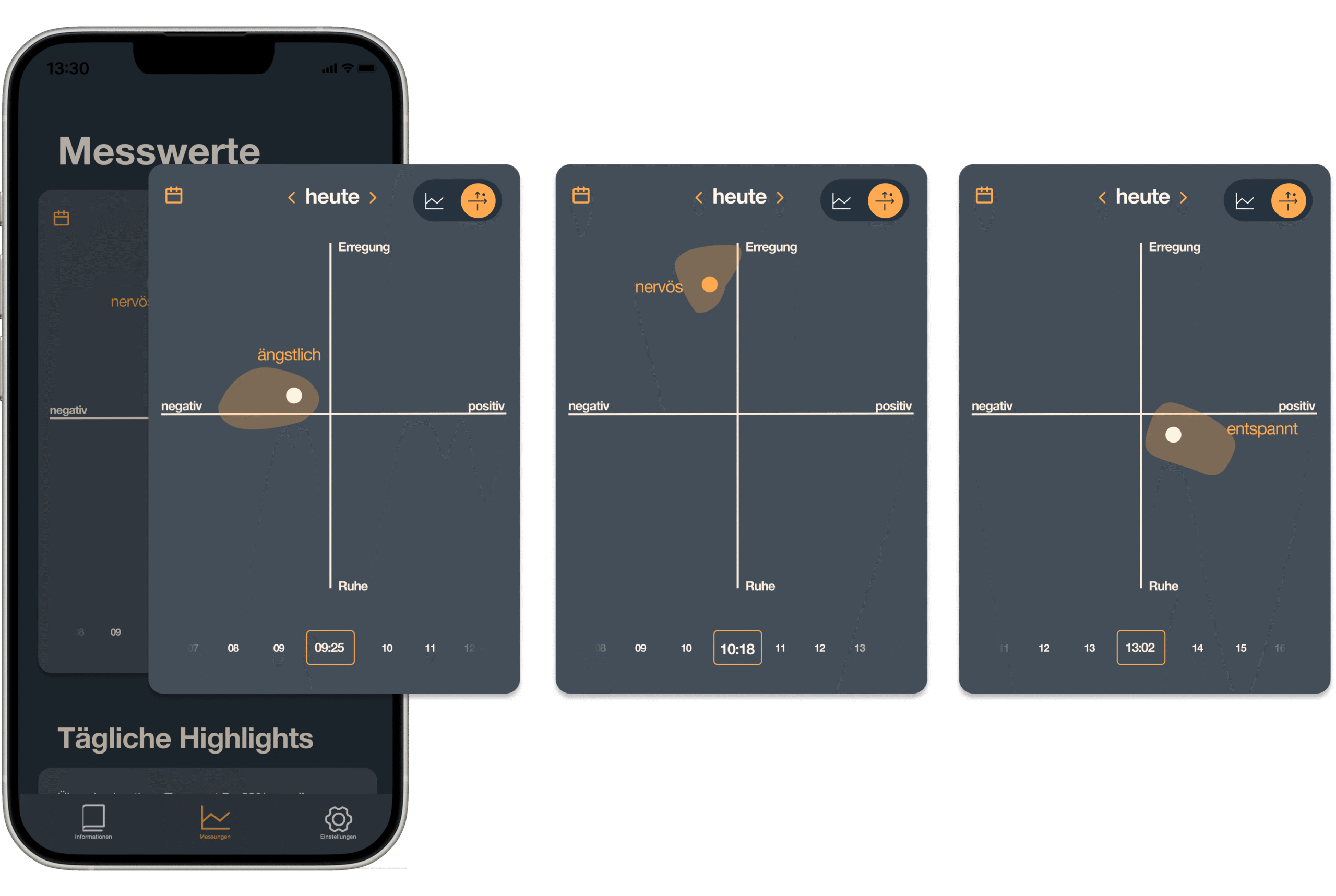
05
/05
INFORMATION
To better understand our product and conditioning, there is an information page in our app. Here you can learn about conditioning, scents, emotions, and AI.
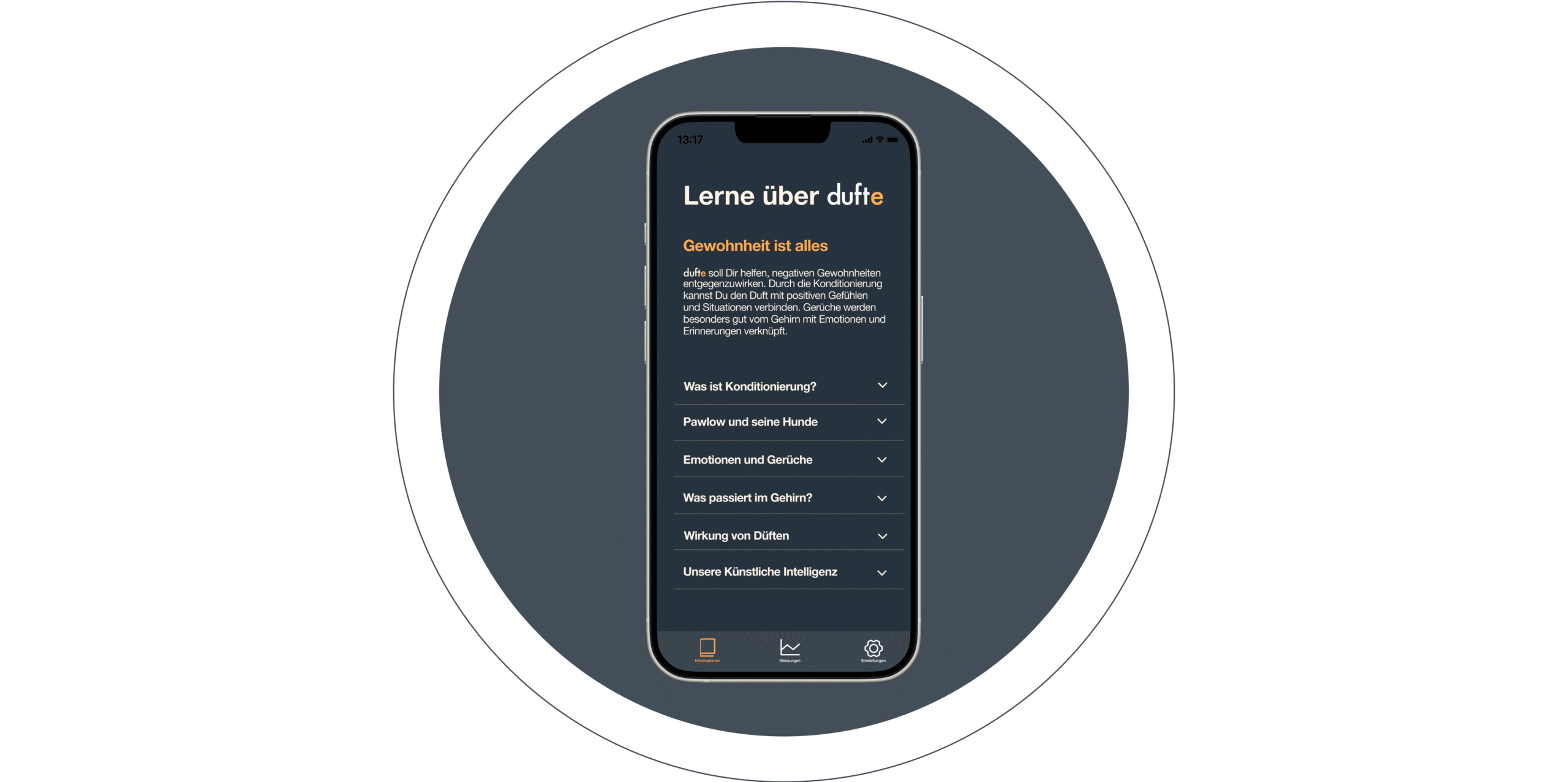
In the end, a concept, a kit and an app were created, which is visualized in this video.
With the help of this video we were able to make our concept easily accessible and understandable.

